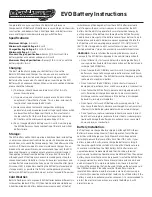
Rev. 1.10
88
November 04, 2019
Rev. 1.10
89
November 04, 2019
HT45F5Q-3
Battery Charger Flash MCU
HT45F5Q-3
Battery Charger Flash MCU
A/D Converter Register Description
Overall operation of the A/D converter is controlled using a series of registers. A read only register
pair exists to store the A/D converter data 12-bit value. The remaining two registers are control
registers which setup the operating and control function of the A/D converter.
Register
Name
Bit
7
6
5
4
3
2
1
0
SADOL
(ADRFS=0)
D3
D2
D1
D0
—
—
—
—
SADOL
(ADRFS=1)
D7
D6
D5
D4
D3
D2
D1
D0
SADOH
(ADRFS=0)
D11
D10
D9
D8
D7
D6
D5
D4
SADOH
(ADRFS=1)
—
—
—
—
D11
D10
D9
D8
SADC0
START
ADBZ
ADCEN
ADRFS
SACS3
SACS2
SACS1
SACS0
SADC1
SAINS2 SAINS1 SAINS0 SAVRS1 SAVRS0 SACKS2 SACKS1 SACKS0
A/D Converter Register List
A/D Converter Data Registers – SADOL, SADOH
As the device contains an internal 12-bit A/D converter, it requires two data registers to store the
converted value. These are a high byte register, known as SADOH, and a low byte register, known
as SADOL. After the conversion process takes place, these registers can be directly read by the
microcontroller to obtain the digitised conversion value. As only 12 bits of the 16-bit register space
is utilised, the format in which the data is stored is controlled by the ADRFS bit in the SADC0
register as shown in the accompanying table. D0~D11 are the A/D conversion result data bits.
Any unused bits will be read as zero. Note that the A/D converter data register contents will be
unchanged if the A/D converter is disabled.
ADRFS
SADOH
SADOL
7
6
5
4
3
2
1
0
7
6
5
4
3
2
1
0
0
D11 D10 D9 D8 D7 D6 D5 D4 D3 D2 D1 D0
0
0
0
0
1
0
0
0
0
D11 D10 D9 D8 D7 D6 D5 D4 D3 D2 D1 D0
A/D Data Registers
A/D Converter Control Registers – SADC0, SADC1
To control the function and operation of the A/D converter, several control registers known as
SADC0 and SADC1 are provided. These 8-bit registers define functions such as the selection of
which analog channel is connected to the internal A/D converter, the digitised data format, the A/D
clock source as well as controlling the start function and monitoring the A/D converter busy status.
As the device contains only one actual analog to digital converter hardware circuit, each of the
external or internal analog signal inputs must be routed to the converter. The SACS3~SACS0 bits in
the SADC0 register are used to determine which external channel input is selected to be converted.
The SAINS2~SAINS0 bits in the SADC1 register are used to determine that the analog signal to be
converted comes from the internal analog signal or external analog channel input.
The pin-shared function selection bits determine which pins on I/O Ports are used as analog inputs
for the A/D converter input and which pins are not to be used as the A/D converter input. When
the pin is selected to be an A/D input, its original function, whether it is an I/O or other pin-shared
function will be removed. In addition, any internal pull-high resistors connected to these pins will be
automatically removed if the pin is selected to be an A/D input.
















































